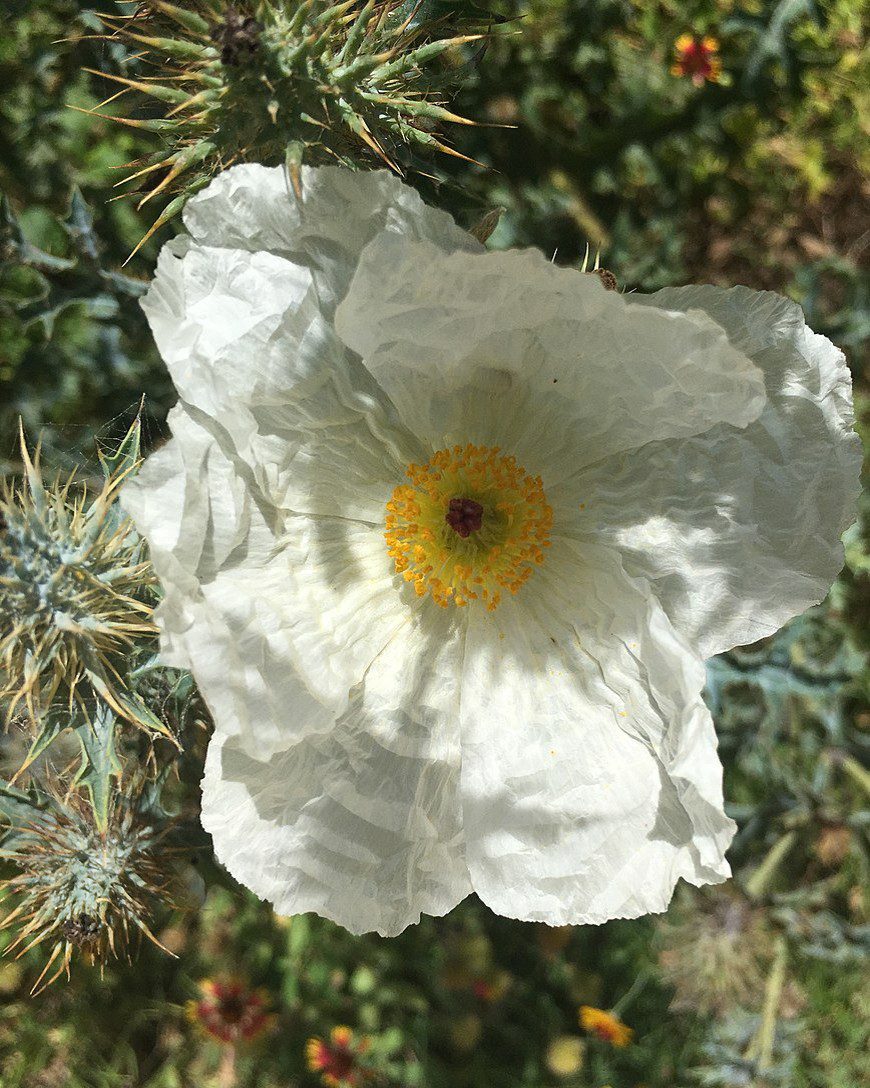This plant has a solid history of herbal use and cultivation in the local area. Preparations made from different prickly poppy species have been used to treat skin disorders, eye problems, headaches, toothaches, digestive trouble, coughs, colds, and insomnia. Its medicinal uses also include healing respiratory issues like asthma, coughing, and hiccups; remedying blood-related diseases such as hepatitis, jaundice, and high blood pressure; treating ringworm; and removing warts.
The prickly poppy can be found thriving in dry woodlands and the slopes of foothills and mountains. While it does have glorious white flowers with yellow clustered stamens, the plant also has sharp little spines that cover its leaves, stems, and fruits to protect itself from predators. Its broken leaves and stems even exude a poisonous, sticky sap to deter animals.

